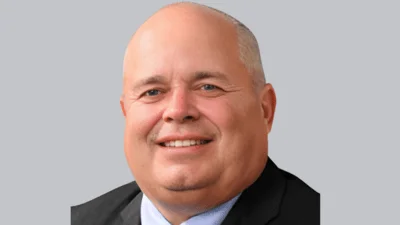City of Rock Island City Council met Nov. 9.
Here is the minutes provided by the council:
ROLL CALL
Present: Mayor Mike Thoms, Alderman Mark Poulos
Alderman James Spurgetis, Alderwoman Jenni Swanson, and Alderman Dave Geenen were present via remote connection in accordance with Governor Pritzker's Executive Order. Alderman Dylan Parker later joined the meeting virtually.
Absent: Alderman Ivory D. Clark and Alderman Randy Hurt.
Staff: Interim City Clerk Linda Mohr and other City staff were present in Council Chambers. City Manager Randy Tweet was present via remote connection.
COMMUNITY AND ECONOMIC DEVELOPMENT DEPARTMENT - OVERVIEW OF THE UPDATED ZONING CODES
Planning and Redevelopment Administrator Miles Brainard came up to speak about an update to the City's Zoning Code. He provided a brief history of this process, which has been going on since 2016. He said after a multi-year delay, Staff chose to end a contract with a consultant and complete the update in-house. short term updates addressing several different issues have already been completed. Staff was committed to completing a new code by the end of 2020 and met the goal. Also, the Planning Commission has approved the new code, and the Public Hearing has taken place.
Mr. Brainard discussed the opening chapters of the new Zoning Code, including new changes. Those included the adding of new purpose statements from planning consultant Ancel Glink, expanded definitions, updated fines to new state levels, maintaining and moving Unrelated Group Use rules to another part of the Code, Major Home Occupations are now just authorized uses approved by the Board of Zoning Appeals, and Special Uses no longer require permission to apply for approval from Council.
Mr. Brainard discussed the changes in Zoning Districts, meant to address different types of land uses. The old list had a total of 23 districts, and the new total is 17, a change made for clarity and easy use. He said some categories were unnecessary or had never been used, but could be added back in the future if necessary. He explained that some district names had been changed to better reflect what they actually were.
Mr. Brainard discussed the general provisions sections of the code as well as parking regulations. He said there was not a clear rule on how to measure things in the previous code, and the building inspectors had their own measurements. This has now been aligned and corrected with the new code changes. Recent changes include additions for solar energy, cannabis, and short-term rentals. He discussed the changes made to parking and parking
Mr. Brainard discussed the general provisions sections of the code as well as parking regulations. He said there was not a clear rule on how to measure things in the previous code, and the building inspectors had their own measurements. This has now been aligned and corrected with the new code changes. Recent changes include additions for solar energy, cannabis, and short-term rentals. He discussed the changes made to parking and parking surface requirements within the City.
Mr. Brainard discussed changes to the performance standards section of the code. He said environmental aspects such as smoke emissions, particular matter, toxic waste, vibration, and noise have been left to other governmental bodies for regulation. The current illumination requirements have been kept, as Staff has the capability to accurately measure it. Staff has tried to improve landscaping code by increasing some of the features in buffer yards and within parking lots.
Mr. Brainard discussed the changes made to the residential district Zoning Code. He said it has been updated to include an increased variety of housing options, which gives residents more choices. It also increases the flexibility of the code to meet changing demographic needs. The updates include allowing smaller houses on smaller lots. He noted that the update has reduced the minimal principal dwelling to 400 square feet, down from the current standard of 900 square feet. The minimum lot size of 5000 square feet would be eliminated, but there is a minimum lot width of 50 feet, or a uniform urban space. Also, a four foot tall front yard fence is allowed, but certain fence materials will be prohibited.
Mr. Brainard discussed ADUs (Accessory Dwelling Units) in residential districts. He said this is best described as tiny house in the backyard. It must be 400 square foot or less, its' own dedicated parking space, must be in the rear yard, and the property owner must live in one unit or the other. He added that many states have laws to prohibit municipalities from outlawing ADUs, but it has not yet passed in Illinois, and the City is better served being ahead of the curve.
Mr. Brainard discussed the types of business and office districts. B-2 is the downtown, dense mixed-use zone. B-1 and O-1 are for small scale neighborhood businesses with limited residential conflicts. B-3 is meant for medium scale community-wide businesses with frequent residential conflicts, such as grocery stores. B-4 and O-2 are for large scale regional businesses with significant residential conflicts, such as the local hospital. He said as part of the new code, residential units would be allowed above the first story in all four business districts and in O-1 if it is BZA-authorized. Other updates include reducing the minimum front and side setbacks in both B-1 and O-1 to zero, and expanding the use of O-1 as a transitional district.
Mr. Brainard said one of the larger additions to the code is adding design standards for businesses and offices. He added that the goal is to provide a clear framework to negotiate site design, and they aim to create a higher quality built environment and improve the character of the community through achievable and sensible requirements. He said Staff needs a flexible design framework achievable for most developments with minimum variances. He discussed parking in reference to businesses and offices, and the standards for each. The goal is to attempt to balance good design principles with the development realities of the City. He added that Staff is cognizant of residential conflicts with regards to business parking.
Mr. Brainard discussed different fee structures for neighboring municipalities, and said there are large variances. As a result, Staff looked at two possible sets of changes. One was to break out the fee structure into greater variety so residents would pay an appropriate amount for their situation. Mr. Brainard said a new map has not been created yet due to shortages of time and volume of work, but he and Urban Planner Alan Fries have been working on it.
Mr. Brainard discussed comments from the Planning Commission regarding the proposed new Code. They voted to recommend that Council approve the code, and included three suggestions. The first was a request to adjust the bicycle parking requirements with a better ratio, to which Mr. Brainard said would be tweaked. The second was a request to add language encouraging preservation of old growth trees. The third was a request to continue dialogue on parking standards and setback requirements in business and office districts.
Code. They voted to recommend that Council approve the code, and included three suggestions. The first was a request to adjust the bicycle parking requirements with a better ratio, to which Mr. Brainard said would be tweaked. The second was a request to add language encouraging preservation of old growth trees. The third was a request to continue dialogue on parking standards and setback requirements in business and office districts.
Mr. Brainard provided a summary of the proposed updates to the Zoning Code. He said Staff attempted to incorporate consultant suggestions that reflect knowledge specific to the community, and added that the Code is meant to be more user friendly, up to date, and reflective of the community's character. He asked Council to reach out with comments or questions. Alderman Spurgetis thanked Mr. Brainard for their work on this and congratulated Staff on their efforts. He asked about the setback language within the code. Mr. Brainard said the language of the Code itself was more flexible than the summary, and Staff would make a judgment at the time.
Alderman Parker asked about the contents of the ADUs, and whether or not there were requirements for them. Mr. Brainard said the Building Code would specify that part of it, but the Zoning Code says what can be built and where. Alderman Parker asked if the 2018 Code for tiny houses would include the new language, and Mr. Brainard confirmed that it would be an addendum to the existing language. Alderman Parker asked why the City was asking for parking minimums now. Mr. Brainard said many places in the City alternatives to off-street parking are limited, and complaints about overflow parking are numerous. He said those types of conflicts are why Staff thought the parking minimum needed to be addressed, and added they wanted to make sure to cover the most common situations in the Code. Alderman Parker asked how to address issues like 14th Street and 30th Avenue and the Downtown to make it more pedestrian friendly. Mr. Brainard said it would depend on what type of businesses are there and what would be required. Alderman Parker asked why Staff took the position they did regarding percentages of window coverage. Mr. Brainard countered that the consulting firm that Staff worked with suggested 40 percent, but the alternative language says 70 percent. He said the 40 percent number is more similar to what was seen in other communities, and 70 percent was deemed excessive. Alderman Parker said the City's zoning ordinance has been referred to in an analysis of impediments to fair housing, and asked if Mr. Brainard and Mr. Fries had look at the policy recommendations from the Fair Housing Committee. Mr. Brainard said the goals for the update were general, as that was their input from the consultant, and there is also a discussion to bring in a specialist who will look at the issues Mr. Parker was raising.
Mayor Thoms said he commended Staff and the Planning Commission for being open minded and transparent during the process. He said he continued to be pleased to see open dialogue between the Undependents group and Staff regarding the Hilltop area. Mr. Brainard said he was grateful that a group in the community wanted to talk about these issues, and that people read the Code. He encouraged additional feedback and questions from Council.
https://www.rigov.org/AgendaCenter/ViewFile/Minutes/_11092020-659






 Alerts Sign-up
Alerts Sign-up